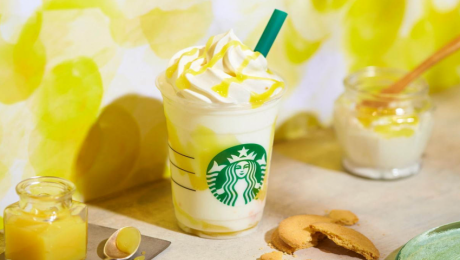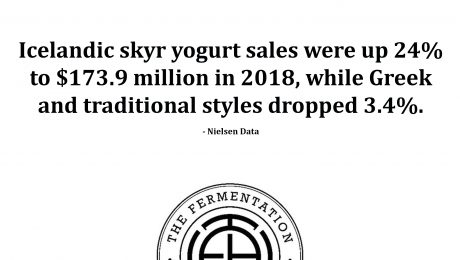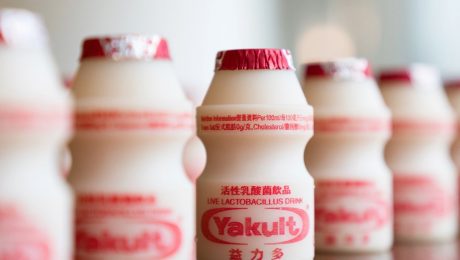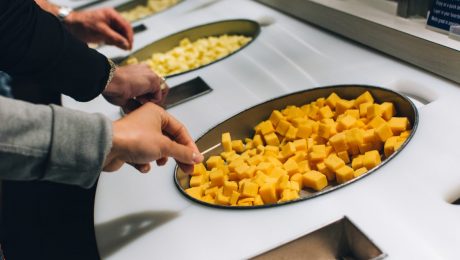Founder of Fermented By Lab Shares Food Diary Featuring Fermented Products
One question commonly posed by consumers starting to eat fermented products: How do I incorporate fermentation into my daily meals?
Alana Holloway, founder of Fermented By Lab, provides a great overview on how she uses fermented food and drinks. Hollaway’s food diary illustrates that it’s possible to include fermentation as a key element to every meal. Her simple meals are easy, delicious and highlight ways the average consumer can pair fermented food and drink with their regular food. Her dairy is also a great example of creative marketing fermented food brands can use to showcase ways to use their food.
Here’s Alana’s food diary, showcasing what she eats to keep her gut in good health.
Approach to food: I love to eat intuitively, according to the seasons… not only that, but according to the weather and how I’m feeling on any given day. After a lifelong battle with eczema, I have now found the key to managing it with the right foods for my body, and a complimentary lifestyle, too. I like to maintain a balanced, healthy gut and so eat/drink ferments every day… just as well I run a company that makes them!
Food Diary:
DAY 1 – FRIDAY
I tend to start day with about a pint of warm water. I really find it gives me immediate energy following sleep. I’m really not a lover of cold water, so will always drink it at room temperature or warm/hot.
I usually have breakfast about 10.30 as I struggle to eat too early in the morning. I like to allow my body time to build up a good hunger! Now that Spring is here, I’ve swapped my porridge for smoothies. This morning’s is organic cooked beetroot (I cook up a batch and then freeze it for smoothies), organic frozen strawberries from last Summer, a green banana, which is a great source of prebiotic fibre, coconut yoghurt, goats milk Kefir for the all-important probiotics, Plenish cashew milk (my favourite) and a little raw honey for a some more prebiotic love! I also take an omega 3 supplement; generally speaking, I’m not a massive supplement advocate and prefer to get what I need from my diet, but as I am prone to really dry skin, I find this one helps.
I grab a small handful of Brazil nuts as I head out the door.
At 1pm I have a chunk of goats Gouda and another pint on warm water whilst waiting for my lunch to cook. I can tell it’s going to be a hungry day for me today!
At 1.30, I have a lunch of sliced avocado roasted chickpeas with nigella seeds, soft boiled egg, roasted sweet potato, Fennel + Lemon Kraut from the Fermented by LAB Spring Collection, steamed broccoli & kale.
3.30 small glass of Kombucha as I need a bit of a kick!
At 7pm I have dinner – it’s lentil Dahl with Carrot + Coriander Kraut from last year’s Autumn Box (one of my favourite things about fermenting foods is getting to eat them months later!)
I drink a Golden Mylk before bed and soak some oats for tomorrow morning’s porridge… I mentioned Spring too early and hear it’s due to snow tomorrow!
DAY 2 – SATURDAY
10am – I start the day with two huge mugs of warm/hot water again and follow it with the porridge I soaked last night. I always soak my grains/pulses/legumes to make them easier on my digestive system. My porridge toppings are roasted rhubarb, coconut yoghurt, a little raw honey and some chopped Brazil’s.
3pm – Lunch is a chunk of goat’s milk Gouda (I can’t get enough of it!) and roasted broccoli, carrot, fennel, sweet potato and nigella seeds with a soft-boiled egg (again!) Despite it being the weekend, I’m working and need something easy to cook which doesn’t require too much thought!
5pm – I have a bottle of Red Grapefruit + Rosemary Kefir from the Spring Box. I’m lucky enough to be able to delve into a good selection of seasonal ferments… it means I don’t get bored with eating the same Kraut all the time!
7pm – I try to stop eating by 8pm so that I can give my digestive system a break overnight. As I had a late lunch, I’m not overly hungry so make a beetroot, carrot (both cooked and frozen), blackcurrant, green banana and goats kefir smoothie and have a mug of chicken bone broth.
I drink a small Golden Milk just before bed. They really relax me and as I have a history of eczema, find they really help keep my inflammation at bay.
Best piece of advice about health + wellbeing?
Don’t search for all the answers in one place. Every day, I try to remind myself that it’s not just about a healthy diet, a good exercise regimen, good quality sleep or daily meditation practice, for example, it’s a combination of all of them that allows you to live your healthiest and happiest life.
- Published in Food & Flavor, Health
Should a Fermented Process Get a Patent? PepsiCo Files Oat Flour and Dairy Co-Ferment Patent
Should a fermented food process need a patent? PepsiCo has filed a patent to ferment oat flour and dairy milk together. PepsiCo-owned Quaker Oats is creating a “spoonable or drinkable” clean-label product comparable to yogurt. The process involves co-fermenting a grain, dairy and a set of metabolites. This patent is unique because, while there are existing food products that combine unfermented and fermented dairy and grains, none co-ferment grain and dairy at the same time. In their application, PepsiCo notes that consumers are increasingly consuming fermented food products for health benefits.
Read more (World Intellectual Property Organization)
- Published in Science
Starbucks New Drink Alert: Lemon Yogurt Fermented Frappuccino
Starbucks Japan has a new drink: Lemon Yogurt Fermented Frappuccino. The inventive flavor contains three different fermented ingredients – can you guess what they are? Yogurt, cheese and amazake, a fermented rice drink. The yogurt is in the drink’s base, the cheese is in the shortbread topping and the amazake is in the lemon curd sauce. Writes Japan Today: “Fermenting is a process which has deep roots all over Japan, and Starbucks hopes this beverage can act as a little tribute to that tradition.”
Read more (Japan Today)
- Published in Food & Flavor
Athletes: Fermented Food & Drink Best for Performance Enhancement
Put down the Gatorade, athletes — the best performance-enhancing substance is fermented food and drinks. An article in sports magazine STACK says athletes are overlooking fermented products for workout nutrition. Fermented products — like raw sauerkraut, kimchi, yogurt and kefir — heal the body with beneficial bacteria and combat gut imbalances. “The better our digestion, the better we utilize the food we are putting into our body, leading to even better improvements in our strength and health,” the article states. Though there is little research in the field, the article points to one study which found probiotics helped female college athletes improve body composition and deadlift performance.
Read more (STACK)
- Published in Science
Danone Releases Collection of 1,800 Yogurt Strains to Celebrate 100th Anniversary
To celebrate its 100th anniversary, Danone is releasing its collection of 1,800 yogurt strains to the public. In a press release, Danone said the announcement coincides with Danone’s “commitment to promoting open science, a movement toward openness in scientific research, sharing and development of knowledge through collaborative networks.” Danone would like others to use the strains for research purposes. The French company is also granting access to its current collection of 193 lactic and bifidobacteria ferment strains deposited at the National Collection of Cultures of Microorganisms, held in the Biological Resource Center of Institut Pasteur in Paris. The first Danone yogurt was made by Isaac Carasso in 1919 in Barcelona. Barcelona’s own children suffered from poor gut health, and he was inspired by research from the Institute Pasteur that detailed the role of ferments in gut and overall health. Barcelona began selling his first yogurts, which were fermented with lactic ferments, in Barcelona’s pharmacies.
Read more (Danone)
Icelandic Skyr Yogurt Sales Up 24%; Greek & Traditional Yogurt Sales Drop 3.4%
Icelandic skyr yogurt sales are up 24% to $173.9 million in 2018 while Greek and traditional styles dropped 3.4%
Nielsen Data
- Published in Business
Q&A with Katherine Harmon Courage, Author of “Cultured: How Ancient Foods Can Feed Our Microbiome”
When Katherine Harmon Courage began investigating the microbiome 10 years ago as a writer for Scientific American, gut health was barely a blip on the public’s radar. It’s hard to believe today. You can’t walk by a grocery store shelf without reading dozens of labels advertising probiotic health benefits.
Today, gut health is at the forefront of the food industry. The probiotics supplement market is estimated to grow at a CAGR of 9.7 percent in the next seven years. And the market for probiotic-rich fermented foods is expected to grow at a CAGR of 4.98 percent in the next five years.
Gut health research from scientists and dieticians surged in the past decade. Courage was fascinated. “Looking at the food around the world and the connection between our ancient diet and microbes, that is really, really exciting,” she says. Courage spent a year travelling the world, exploring the traditional, gut-friendly cuisine of different cultures. She paired her culinary investigation with modern science into an engaging book: “Cultured: How Ancient Foods Can Feed Our Microbiome.”
Below, highlights from a Q&A with Courage on her new book, and her findings on the fermentation industry’s role in American’s evolving diets.
Q: You have been covering the microbiome since 2009. How has the scientific research progressed?
When I started covering it, there were small studies here and there, a lot from the Human Microbiome Project. Researchers were taking a census at the time, that we share our body with trillions of organisms. It was this niche area that I found super fascinating, but no one was talking about it much.
In the past decade, so much has changed. Science has evolved so much to learn about the connection between our health and our microbiome. We were raised to think germs are bad, bugs are bad, but we live with these commensal organisms.
Q: The food industry is taking notice of this research. What do you think of so many food products marketed with a gut health focus?
Talking to researchers, it’s interesting to see their perspective as scientists. They see the extreme of people thinking probiotics and microbes that are a marketing ploy to other people thinking probiotics and microbes will cure every health issue under the sun.
Microbiologists look at this critically. We’ve seen positive impacts on our health from it, but it won’t solve everything. We’re just at the beginning of understanding this relationship between these amazing and delicious fermented foods and our health.
Q: What’s the biggest misconception about microbes and our microbiome?
One of the misconceptions — and the one I had when I was thinking about this book — was the notion that if we eat something labeled probiotic, like a cup of yogurt, that we’re reinoculating our gut and restoring our gut health. Like if we eat a cup of yogurt, we’re good to go.
These microbes that we eat don’t stick around permanently. They’re just along for the ride. Weeks after we consume these, they’re not there anymore. When I learned this, I thought “There goes my research.” But when I looked into it more, in traditional culture and cuisines, people are eating fermented foods all the time, every day. It’s not about that one special food you eat or that one magic pill. It’s having those foods part of your daily cuisine and part of your life.
It’s great for fermentation producers. You don’t eat one jar of kimchi and call it good — you need to keep integrating it into your diet.
Q: Can a pill really fix our gut health?
Not being a scientist, I can’t say if it will or won’t fix our gut health. But talking to microbiologists who study this, it really is about exposing our bodies to these bacteria. We live our lives in such clean and pasteurized lives that we don’t get that microbial exposure. Their perspective is eating as many bugs, exposing ourselves to as many bugs, it will have a positive impact on our immune system as long as we’re healthy. A lot of the probiotic pills have been studied and they have positive health correlations, but we’re still learning so much about it.
Eating fermented foods, especially wild fermented foods, can be even more beneficial. Microbiologists and researchers in this field are really just starting to see what microbes are beneficial to our health. We can expose our bodies to more microbes through wild fermented foods because they’re so much more complex and have so many more microbes, rather than a yogurt with just three different microbes in it. We’re getting so much exposure through wild fermented foods.
Q: Why is it bad if we don’t properly feed our microbiome?
There’s the old friends hypothesis which is similar to the hygiene hypothesis. Our bodies have evolved to expect microbial exposure. But now our immune systems have gotten on this overactive trajectory, attacking these things they don’t need to.
We need to remember our native gut microbes, to feed them the nutrients they need to thrive. When we don’t feed our native microbes the fiber they need to thrive, they’ll eat the mucus lining in our gut, leading to more inflammation and asthma. We need to eat more microbes and feed the native microbes we do have.
Q: Can our native microbes change if we don’t feed them?
There’s been some interesting research out of Stanford’s Sonnenburg Lab. Mice fed on a diet with less fiber tend to have decreased microbiomes. Over generations, as the mice have pups, they pass that microbiome on to their pups. Generations later, these pups have super impoverished microbiomes. And they can’t come back and have a healthy microbiome by feeding them more fiber.
Q: Fermented foods are making waves in the food industry as the next big superfood. Tell me about fermented food in the book?
For the book, I got tor travel all over and explore these different cultures that have different fermented food traditions. I picked four main food places with quintessential fermented food — Greece to research yogurt, Korea to research kimchi, Japan to research miso and Switzerland to research cheese.
One of the cool discoveries I made travelling to these places was I discovered other aspects of the local diet that nourish the microbiome, other fermented foods and whole foods. These countries have different ways of thinking about eating than we do in America.
Q: What was the most eye-opening aspect of exploring other culture’s cuisine?
There were a couple. One, touring one of the big food markets in Seoul, Korea. Kimchi is their national food, but I was shown all these different fermented foods, different sauces, fermented soybean paste similar to miso, fermented veggies. It permeates their culture. Looking from far away in American grocery stores and farmers markets, you wouldn’t see it.
Second, in Japan, speaking with another author, we were talking about nato. Some people find nato challenging because it’s made with basic fermentation rather than acidic fermentation. The Japanese approach to fermented food, they teach at a very young age that “This is a wonderful, healthy food.” In America, we teach food as “Try this because it’s gratifying and yummy.” There’s this dichotomy of healthy foods versus gratifying goods. In Japan, there’s more of an understanding that there’s a wide variety of foods and you’re expected to eat all of them because that’s how you have a healthy life.
Q: Do you think this surge of fermented foods is a trend will disappear or a new food movement here to stay?
It’s here to stay. I expect to see it expanding and incorporating into more people’s lives. There is really compelling research with the health benefits, but there’s also these amazing flavors for those of us who weren’t raised with it. Like kimchi. Once you eat kimchi, food seems bland and lacking without it. Koreans describe it as “You need kimchi with every meal.” They can’t imagine eating it without. The flavor and texture experience is a big part of eating. We shouldn’t be forcing it down for our health, but truly enjoying it.
Q: Ancient foods are making an appearance in our diet again. Tell me what you found most fascinating in your research for this book on ancient foods.
One of the interesting things was how they are being incorporated into contemporary culture and cuisine. I went to a fermentation based restaurant in Tokyo, and I talked to the chef about how he’s integrating more traditional practices into contemporary cuisine and making very elegant meals out of them.
Q: Tell me more about your travels to Greece to learn about traditional yogurt. Modern yogurt is often criticized for the scientifically added probiotics. What did you find about traditional yogurt?
My image of yogurt was this fermented product with a few strains. But I wondered, with fermented yogurt products, are they just dumping strains in after they produced it?
Touring a family-owned, small-scale yogurt making facility in Greece, it was interesting seeing their process. They use backslopping, which is using part of the previous batch to inoculate the next batch. Traditionally, that was the way all of these products were made. It makes a richer microbial environment. We don’t know what strains are in it unless it’s sent off to a lab. Their strains come from the batch before and the batch before. Their yogurt would have strains unique to that product since they’ve made it for decades in that same place.
Q: Can better gut health help Americans notoriously destructive eating habits?
I think one of the keys is getting more fiber, especially prebiotic fiber from whole foods, not just a supplement, to really nourish a diverse gut microbiome. And, of course, eating more fermented foods.
For more information on Katherine Harmon Courage, visit her webpage. To purchase “Cultured,” visit Amazon.
- Published in Food & Flavor, Health, Science
Stock Spikes in Yakult After Product Placement
After fermented milk Yakult was featured in the new romantic comedy “To All the Boys I’ve Loved Before,” stock in the company climbed 2.6 percent. Called a “Korean yogurt smoothie” in the movie, fans spotted the Japanese probiotic drink immediately. After the movie’s release, Yakult’s “mention frequency” spiked on social media. Prior to the product placement, Yakult’s stock shares were dropping 6 percent after slow sales growth.
Read more (Bloomberg)
- Published in Business
Researchers Identify Which Protein Fragments Responsible for Flavor
Researchers have developed a way to identify the “flavor-giving protein fragments” in fermented dairy products. The exact taste of fermented foods has been somewhat of a mystery to scientists. Of the thousands of different protein fragments in fermented milk products, it was always unknown which protein was responsible for flavor. But new research from TUM (Technical University of Munich) whittled down those approximately 1,600 protein fragments responsible for the bitter fermented flavor to just 17. This research is important to foodpreneurs wanting to optimize flavors in their fermented products
Read more (Science Daily) (Photo: Foodies Feed)
- Published in Science
Study: Fermented Dairy Products Linked to Lower Risk of Heart Disease
Fermented dairy products reduce the risk of heart disease, according to a new study. By analyzing food journals a group of men kept over 11 years, scientists concluded fermented dairy products have great health benefits. Part of the reason this is important is because dairy products with a high-fat content have been villainized by health experts, causing the public to cut back full-fat milk products. However, the new study is now prompting researchers “to question whether dairy products should be evaluated solely on their fat content, but rather their nutritional content.”
Read more (Newsweek)
- Published in Science










